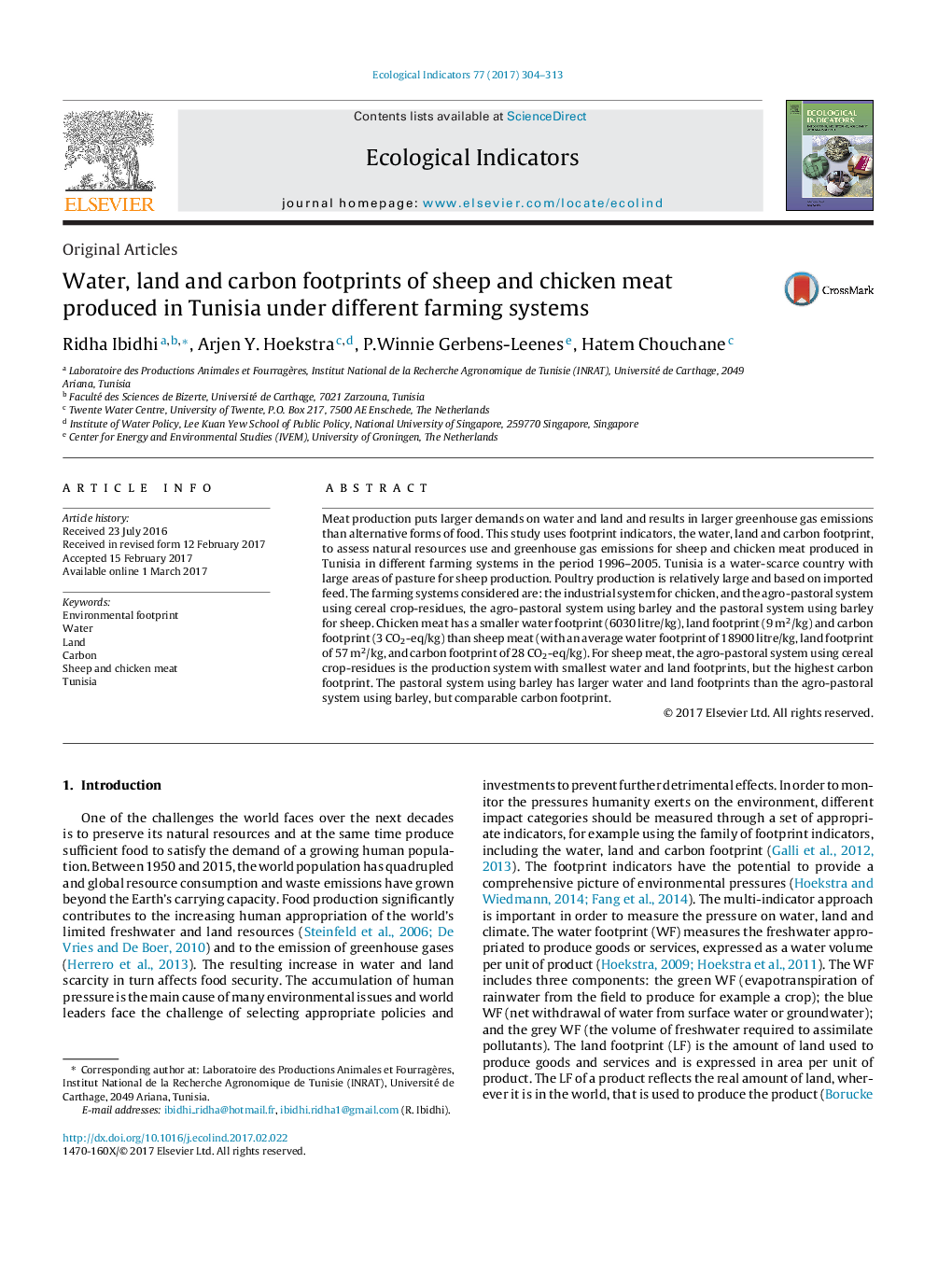| کد مقاله | کد نشریه | سال انتشار | مقاله انگلیسی | نسخه تمام متن |
|---|---|---|---|---|
| 5741734 | 1617125 | 2017 | 10 صفحه PDF | دانلود رایگان |
- Water, land & carbon footprints (WF, LF, CF) of meat vary across farming systems.
- WF, LF & CF of chicken meat in Tunisia are 6030Â litre, 9Â m2 and 3 CO2-eq per kg.
- Average WF, LF & CF of sheep meat are 18900Â litre, 57Â m2 & 28 CO2-eq per kg.
- The WF, LF & CF of chicken meat are dominated by feed production.
- WF & LF of sheep meat are dominated by feed production, CF by manure & digestion.
Meat production puts larger demands on water and land and results in larger greenhouse gas emissions than alternative forms of food. This study uses footprint indicators, the water, land and carbon footprint, to assess natural resources use and greenhouse gas emissions for sheep and chicken meat produced in Tunisia in different farming systems in the period 1996-2005. Tunisia is a water-scarce country with large areas of pasture for sheep production. Poultry production is relatively large and based on imported feed. The farming systems considered are: the industrial system for chicken, and the agro-pastoral system using cereal crop-residues, the agro-pastoral system using barley and the pastoral system using barley for sheep. Chicken meat has a smaller water footprint (6030Â litre/kg), land footprint (9Â m2/kg) and carbon footprint (3 CO2-eq/kg) than sheep meat (with an average water footprint of 18900Â litre/kg, land footprint of 57Â m2/kg, and carbon footprint of 28 CO2-eq/kg). For sheep meat, the agro-pastoral system using cereal crop-residues is the production system with smallest water and land footprints, but the highest carbon footprint. The pastoral system using barley has larger water and land footprints than the agro-pastoral system using barley, but comparable carbon footprint.
Journal: Ecological Indicators - Volume 77, June 2017, Pages 304-313
